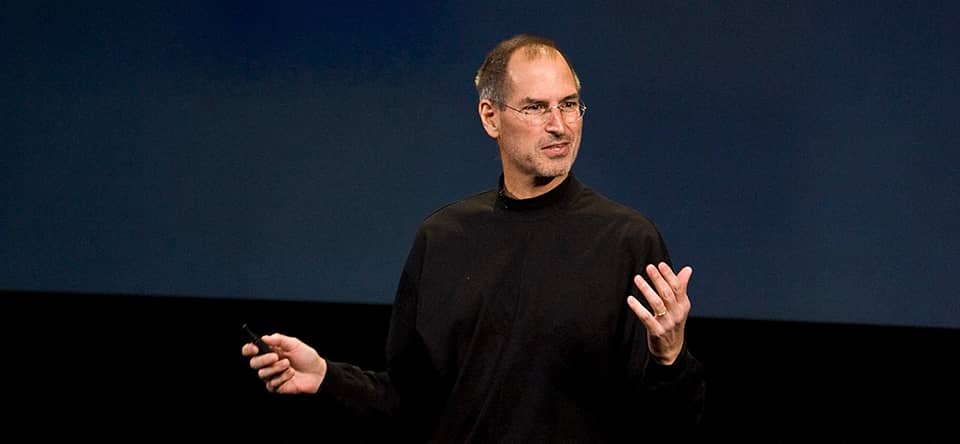Issue 020: The Lessons Steve Jobs Wanted to Pass on (in His Own Words), How to Turn Skeptical Visitors Into Customers, and More

January 29, 2025 | #020 | Free Version
Welcome to Startup Blitz, a weekly newsletter full of timeless ideas and insights you can use in your online business.
🍎 The lessons Steve Jobs wanted to pass on (in his own words)
🏭 Why startups need a 70/20/10 strategy for product development
🤝 How to instantly build trust & turn skeptical visitors into customers
🪙 A simple tactic to grow your subscription business
Not subscribed? Learn more and sign up.
These 7 Types of Evidence Instantly Build Trust And Lead to Sales

When people land on your website, it’s tempting to tell them how amazing your product is.
But here’s the problem – no one believes self-praise. Anyone can claim to be the best. But without proof, visitors will remain sceptical.
That’s why credibility from third-party sources is so powerful. They carry far more weight than anything you could say about yourself.
Andy Crestodina of Orbit Media recently shared 14 types of evidence you can use to instantly build credibility & trust:
1. Testimonials
Avoid making a testimonials page because they tend to get skipped. Instead, put them on your most visited pages.
2. Client Logos
For service providers, these are a strong form of evidence. They stand out with colour and prove you’ve been trusted by other brands. The more well-known their brand, the better. But even logos of unknown brands can build confidence.
3. Case Studies/Success Stories
These little stories explain the problem you solve and the impact of the solution. These work for both individual customers and decision-making teams, making them powerful for B2C and B2B.
4. Years in Business, Size of Operation
If yours is an established firm with years of history, put this on your website. Better yet, make it a subhead.
If yours is a national or global firm, make sure that’s obvious to visitors. Don’t wait for them to click on your contact page to show that you have offices everywhere. Make a page block showing your many locations with a map. Add it to every page just above the footer.
5. Number of Happy Clients, Successful Projects, Etc.
Highlight how many projects you’ve completed and how many customers you’ve satisfied. Remember that stories are more persuasive than stats, so explain who you helped, what service you provided, and back it up with proof.
6. Team Credentials
7. Charitable Contributions
Crestodina has seven more tips you can follow to build trust and increase sales. You can read the full article to learn more.
A Simple Tactic to Grow Your Subscription Business

Offer discounts for groups.
✅ Acquisition: Users are incentivized to bring in friends, since the initial users benefit from the discount. So the group discount becomes an acquisition mechanism.
✅ Retention: Individuals within discount groups tend to cancel less frequently, since doing so would make their friends pay more. As a result, retention increases.
The 70/20/10 Rule Every Growing Startup Needs to Follow

In an interview with First Round, Logistic company Shippo’s founder and CEO Laura Behrens Wu shared how she applies the Three Horizons Framework to manage this balance:
✅ Horizon One: Core Product (70% of resources)
🔍 Horizon Two: Forward-Looking Products (20% of resources)
🚀 Horizon Three: Big Risks (10% of resources)
The key is not to get so obsessed with future ideas that you neglect the products driving your revenue today. Find the right balance, and you’ll keep growing without losing your foundation.
📖 Book of the Week: Steve Jobs - The Lessons He Wanted To Pass On

This week, I want to highlight Steve Jobs, the biography written by Walter Isaacson.
1. On Building a Real Company:
They’re unwilling to do the work it takes to build a real company, which is the hardest work in business. That’s how you really make a contribution and add to the legacy of those who went before. You build a company that will still stand for something a generation or two from now.
2. On Building an Enduring Company:
3. On Why You Shouldn’t Rely on Market Research:
4. On the Intersection of the Humanities and Science:
5. On The Danger of Letting Salespeople Run the Show
6. On Being Direct With Your Team
I don’t think I run roughshod over people, but if something sucks, I tell people to their face. It’s my job to be honest. I know what I’m talking about, and I usually turn out to be right.
7. On Taking Advantage of the Great Work That Was Created Before You:
I think most creative people want to express appreciation for being able to take advantage of the work that’s been done by others before us.
I think most creative people want to express appreciation for being able to take advantage of the work that’s been done by others before us.
That’s what has driven me.
Thanks for reading. I hope you have found at least some of these tips helpful.
Until next week!
You are receiving this email because you subscribed to Startup Newsletter. You can Unsubscribe from here.